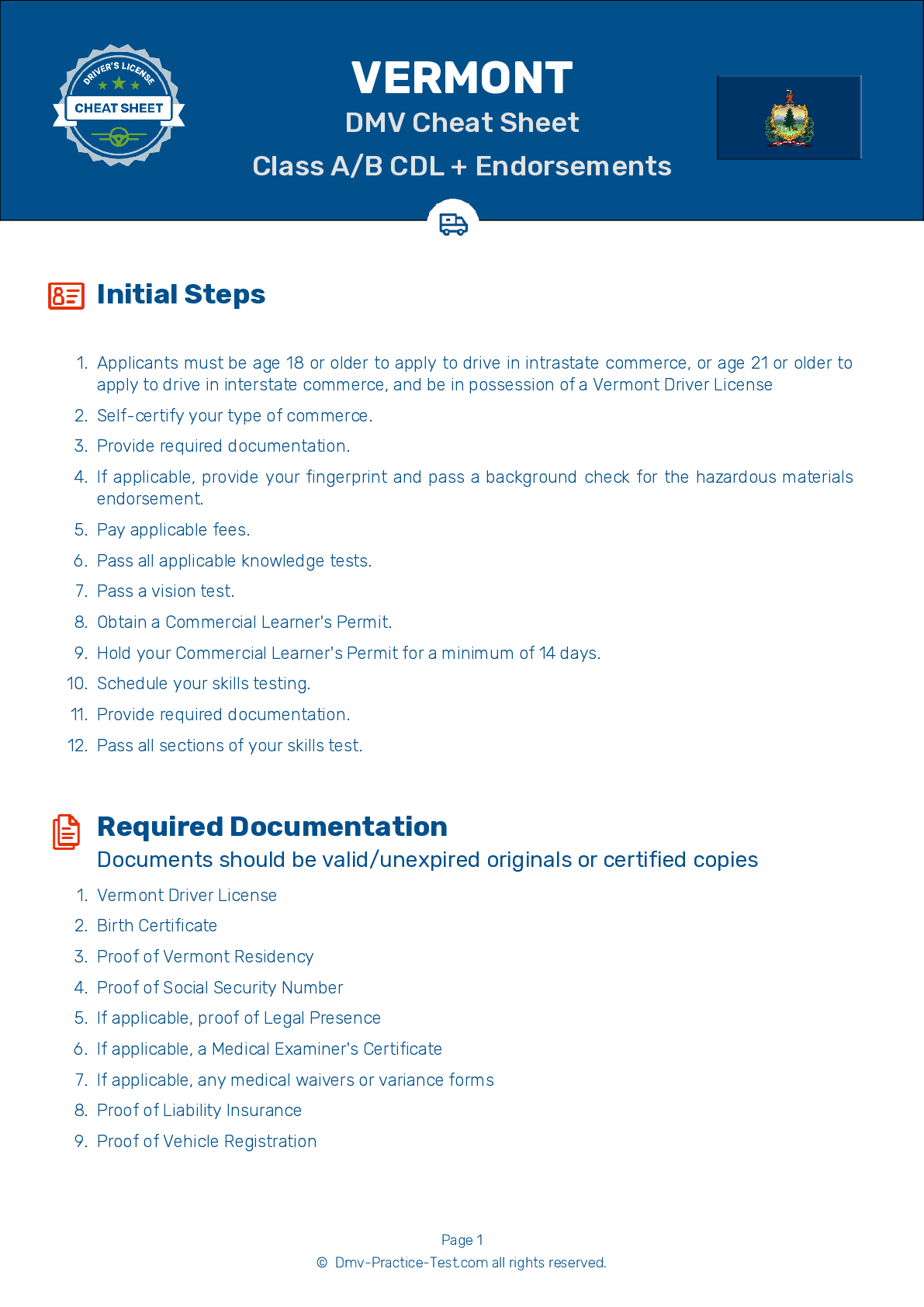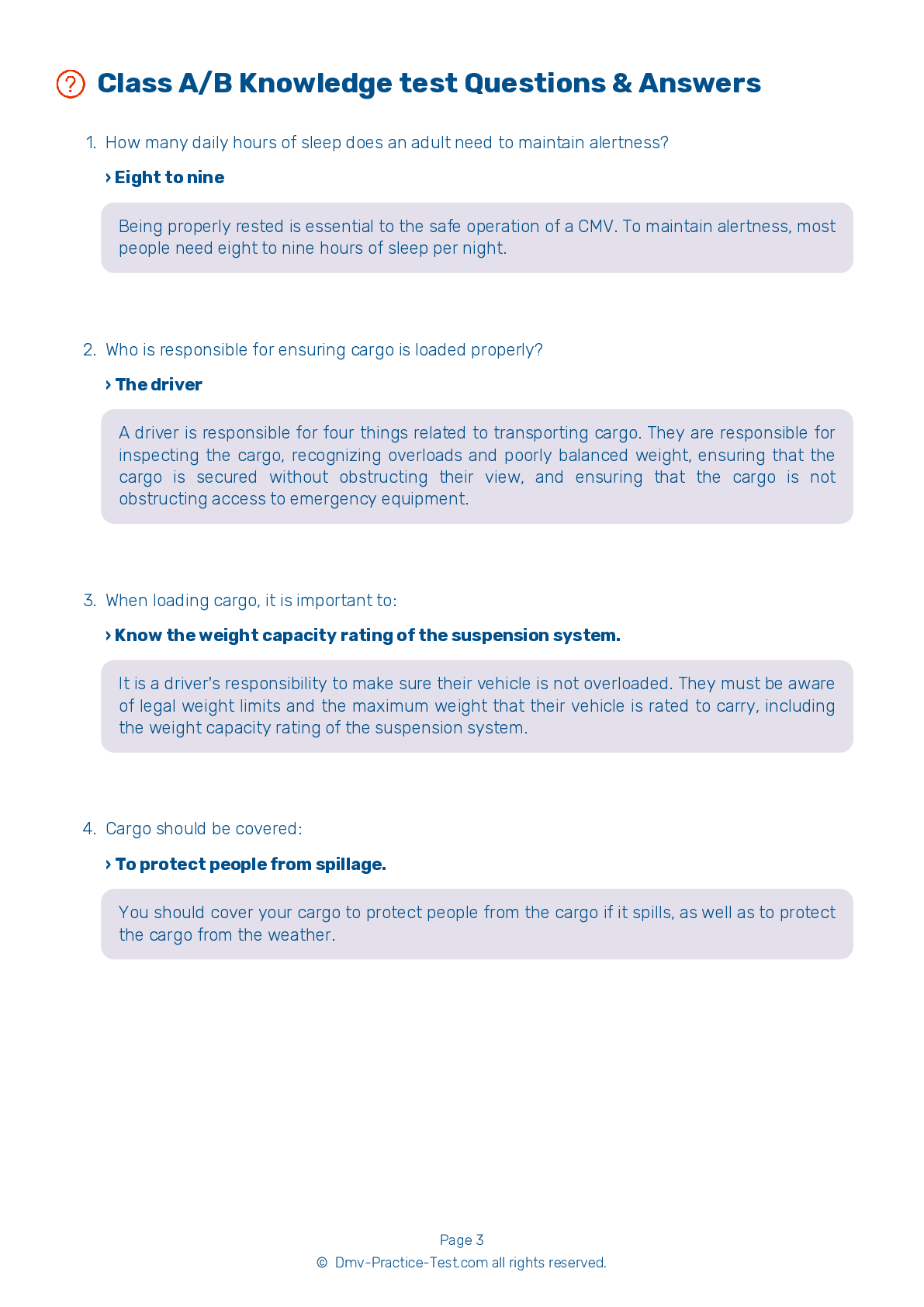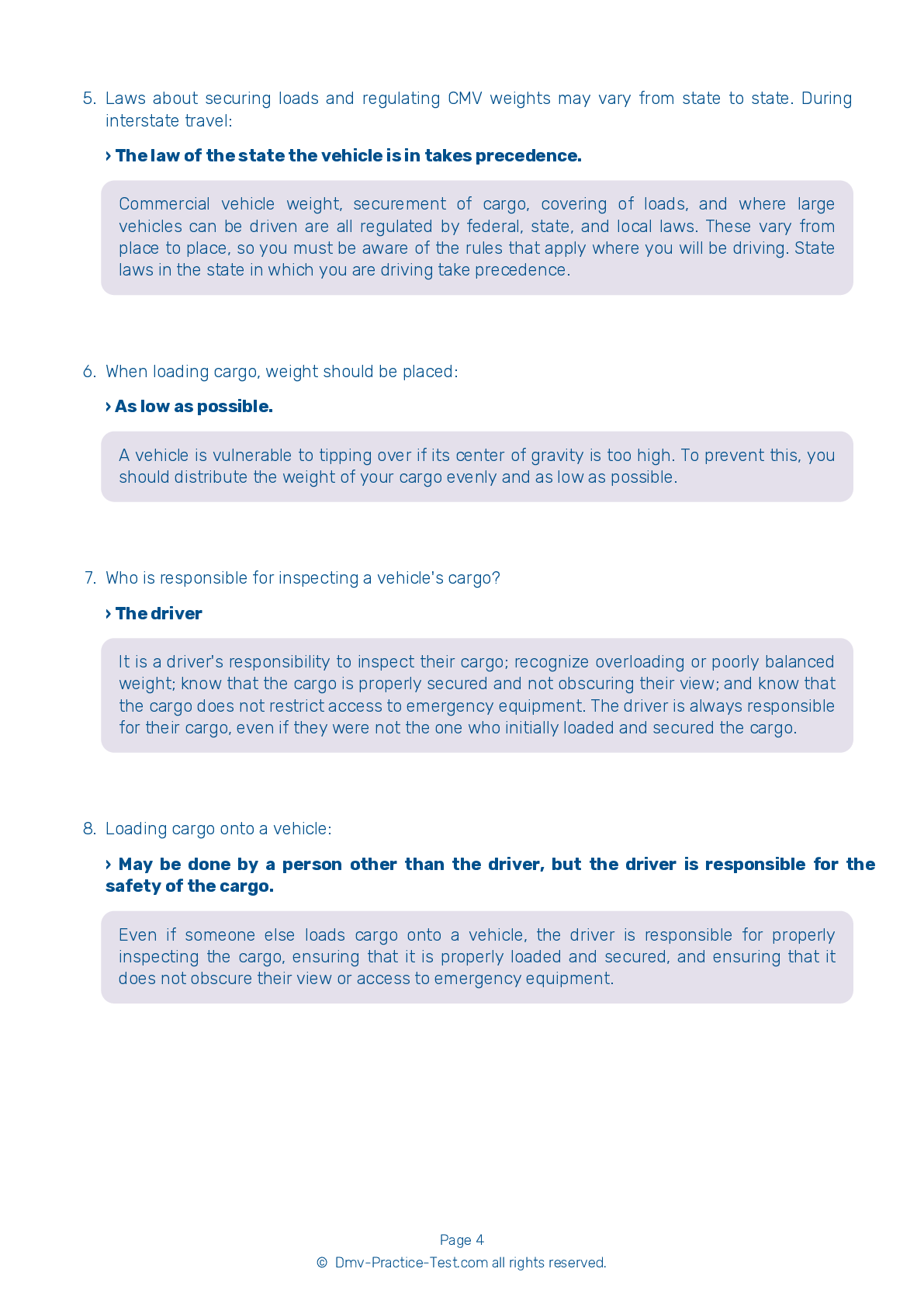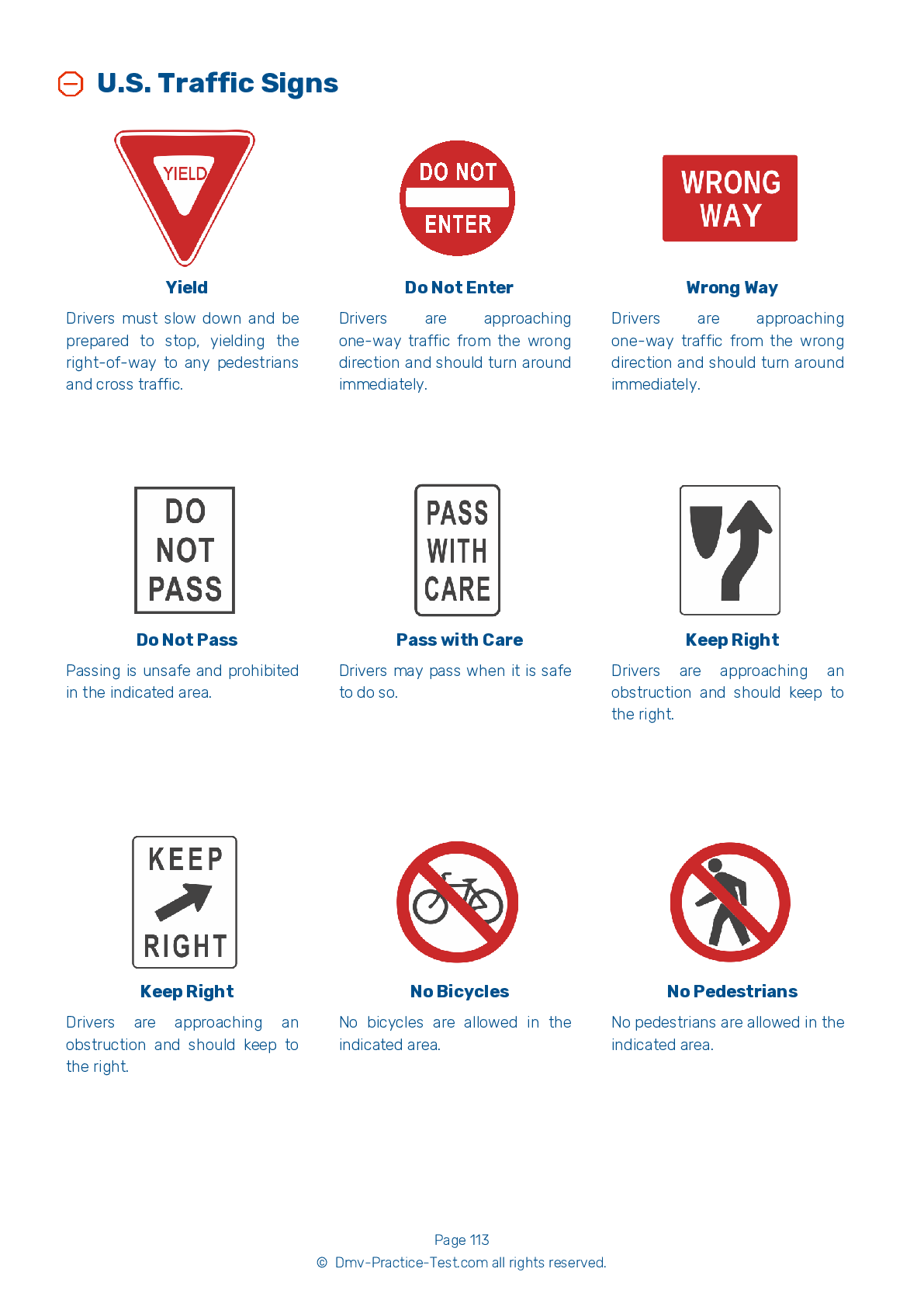Bus #1
Bus Driver Testing | Vermont 2025 #1 Page 2 of 3
Train for FREE online with our VT bus CDL test. The official exam test consists of several obligatory parts, with all of them checking your knowledge of different blocks of road rules. If you need to obtain a license in Vermont in 2025, learn how to become a bus driver and then practice as much as possible. Free sample tests published on our website will help you check and improve your knowledge and boost your grades. Please bear in mind that DMV requirements for a bus driver may vary from state to state.
20
16
20
8 . How far in advance of a school bus stop should a bus's lights be activated?
If a school bus is equipped with alternating flashing amber warning lights, they should be activated at least 200 feet (approximately 5 to 10 seconds) before a stop, unless state law requires otherwise.
9 . If your bus is equipped with a roof-mounted strobe light, it should be used:
If equipped, a school bus's roof-mounted strobe light should be used when conditions create an environment of limited visibility.
10 . A school bus's danger zones are located:
The danger zones of a school bus are areas in which children are most likely to be hit, either by another vehicle or by the bus itself. Such areas are located to the front, sides, and rear of a bus. Danger zones can extend 10 feet from every side of a bus.
11 . When boarding a school bus, students should:
Students should board a school bus slowly and in a single-file line. For safety, boarding students should use the handrail.
12 . When completing an offset back/left parking maneuver, a driver should:
If you are asked to complete an offset back/left parking maneuver, you should first pull straight forward, then back up to the left. Your vehicle must be parked completely within the boundaries of the parking space.
13 . Doors should be closed while a school bus is being driven, except when:
The doors of a school bus must be kept closed any time the bus is moving, except when it is crossing railroad tracks.
14 . If a school bus stalls on a railroad track:
If a school bus becomes stalled or trapped on railroad tracks, the driver should immediately evacuate everyone from the bus. If the bus is struck by a train, to avoid any flying debris, the students should be led far away from the bus at an angle that is in the direction of any oncoming train.
2025 Vermont | Frequently Asked Questions
To acquire a CDL Passenger endorsement in Vermont, you must first have a Commercial Driver's License (CDL). Next, study the Vermont CDL Manual's Passenger Transport section. Then, schedule and pass the written knowledge test at a DMV office. Lastly, complete a skills test in the type of vehicle you'll be driving. The endorsement will be added to your CDL upon passing.
To obtain a CDL Passenger license in Vermont, you must be 21 years old, possess a valid Commercial Driver's License (CDL), and pass a passenger transport written knowledge test. Additionally, you need to successfully complete a skills test in the type of vehicle you will be driving. You must also have a good driving record and pass a medical examination.
Yes, to secure a CDL Passenger endorsement in Vermont, you need to pass a specific written knowledge test and a skills test in the type of vehicle you'll be driving. While Vermont doesn't require formal training, it is beneficial to undergo professional training to pass these tests and safely operate a commercial passenger vehicle. Experience driving similar vehicles is also helpful.
Yes, in addition to the general CDL written test, applicants for a CDL Passenger endorsement in Vermont must pass a specific Passenger Transport written knowledge test. This test covers topics like vehicle inspection, loading and trip start procedures, on-the-road driving, after-trip vehicle inspection, prohibited practices, and use of brake-door interlocks.
During the CDL Passenger endorsement assessment, you'll need to demonstrate proficiency in various skills. These include pre-trip vehicle inspection, loading and unloading passengers, proper use of safety equipment, operating the vehicle safely on public roads, and emergency procedures. You may also need to showcase your knowledge of special rules applicable to buses.
No, you cannot legally transport passengers in Vermont without a valid CDL Passenger endorsement. This requirement applies to drivers of vehicles designed to carry 16 or more passengers, including the driver, and drivers of school buses. Violating this rule can lead to serious penalties, including fines and suspension of your driving privileges.
Yes, you can add a CDL Passenger endorsement to your existing CDL in Vermont. You don't need a new CDL application. However, you must pass the Passenger Transport written knowledge test and the skills test in a vehicle representative of the class and type you'll be driving. Also, you need to pay the necessary endorsement fee.
Yes, drivers with a CDL Passenger endorsement in Vermont must adhere to specific rules. These include not towing a trailer when transporting passengers, and ensuring the vehicle's capacity does not exceed 16 passengers, including the driver. Failure to comply with these rules can lead to penalties such as fines, suspension or revocation of the endorsement.
Yes, to acquire a CDL Passenger endorsement in Vermont, you must be at least 21 years old. This is because interstate operation (driving between states) requires a driver to be 21. However, for intrastate operation (within Vermont only), the age requirement may be 18 depending on local state laws and regulations. Always check with your local DMV for specific requirements.
With a CDL Passenger endorsement in Vermont, you are eligible to operate vehicles such as buses, shuttle vans, and any other vehicle designed to transport 16 or more passengers, including the driver. This endorsement is necessary for school bus drivers, city bus drivers, and drivers for some shuttle services.



